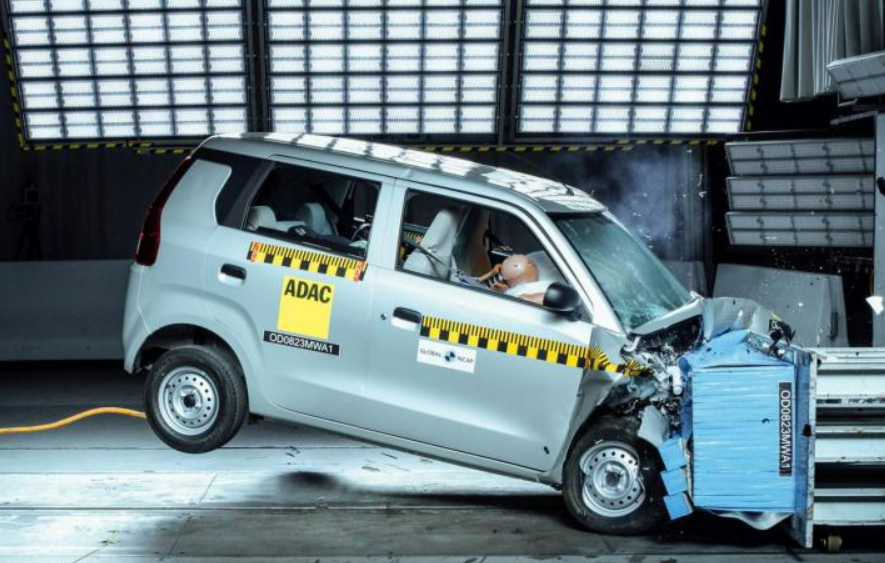
After almost a dozen years since it was conceived, we have finally given birth to our own vehicle safety programme. This is third time being lucky, as the first two announced timelines came to a naught. Not that I am really complaining. Sine it is a regulation of such huge importance and impact for the entire economy, and not just the automobile industry, even if it takes time, the wait should be worth it.
Worth the wait?
The much-touted Bharat NCAP is a damp squib. Here was a terrific opportunity for India to have norms based on Indian realities and requirements, from the vehicle owner’s perspective, but we just let that pass. Once more, regulations have been created for the benefit of the industry and not the consumer.
We might as well have continued with the Global NCAP norms as they have been the de-facto regulation since 2013. So much so that the B-NCAP was announced by the government in the presence of the Global NCAP team, making it amply clear as to who calls the shots. Just like with emissions, we once again allowed external forces to dictate the terms and run the programme from behind the backdrop. The norms are a cut-copy-paste of existing norms. A student summer project would have done the same, only quicker.
We can understand why the norms took time, as quite a few automakers lobbied hard to delay them as they readied themselves not to cut a sorry figure before customers and competition.
But, once everyone was ready and gave the policy makers the thumbs up, why do a half-hearted job? Factors affecting road safety in India are not the same as in Europe or China. The operating conditions, variables, compliances and driver competence are as important as the capability of the vehicle.
Comprehensive norms, please
Road safety is not just about handling a crash or accident but more about trying to avoid one. The proposed norms focus on passive safety systems, just like all others across the world and as advised by Global NCAP. The active safety systems should have been incorporated in the norms to make them truly comprehensive and relevant to Indian operating conditions.
We Indians are easily distracted while driving. Telephone calls, entertainment screens, tinted glasses, and many more. These too cause accidents, not just jaywalking or cattle crossing or the vehicle coming the wrong way. There need to be systems and regulations on features within the vehicles that can help avoid the accident in the first place. I am not really bothered about how it works in Germany or China as their very ecosystem is far more disciplined and compliant than here. Active safety systems within the vehicle too need to be rated under the B-NCAP to make the entire process comprehensive. A piecemeal approach always has room for loopholes, interpretations and lapses in implementation.
The Indian automobile industry suffers from the classic herd mentality of offering bells, whistles and screens as being done in the west. An automaker finds it easier to do so than actually tailor a product to our requirements as that would require deeper customer engagement and longer gestation periods towards success. However much we may wave the flag of being “Atmanirbhar”, we are always uncomfortable in creating policies and enablers from scratch that are most relevant to the Indian consumer. Plagiarism is easier.
Mandatory, not voluntary
Would you allow packaged food items without the FSSAI rating? Would you allow medical equipment to be sold without the regulatory markings and certifications? If not, then why make B-NCAP voluntary? Is safety a matter of choice for the automaker? Will it not be unfair on the Indian consumer to be deliberately confused with vehicles with and without ratings? The norms go deliberately soft, to the benefit of automakers who continue to peddle old metal in the name of “meeting existing norms and price points”. Some leading automakers have the nerve in announcing that they would volunteer “at least three models” for the testing, as if they are doing the government and the consumer a favour.
As the norms kick in from October 1, 2023, the government needs to make sure that all, I repeat all, vehicles that are sold in India meet them by March 31, 2024. Sold, and not only manufactured. The automakers have no excuse now of paying “hefty testing fees” as they have been slashed by 75%. Little does the customer realise that the same automaker who complains about testing fees happily coughs up the same amount for just a single spot on IPL! Even if an automaker sells 30 units in India in the whole year, the vehicle must meet the B-NCAP norms.
What about the ecosystem?
Even if we have a comprehensive and mandatory NCAP, will that ensure less accidents and deaths? Not at all. Only the vehicles get safer, not the roads, the surrounding infrastructure like signage and pedestrian paths, the traffic management and the driver consciousness. They continue to remain as hectic and haphazard as always. We seem intent on building roads by an X km per day, not necessarily quality roads. Till the time we do not sort out the ecosystem, the accidents may reduce, but not by much.
But that is another story for another day. Right now, after much ado, if the current Bharat NCAP norms are what we have been waiting for all these years, they have been a complete let-down from the vehicle owner’s perspective. We could have set new global benchmarks in testing parameters. A huge opportunity to have comprehensive norms tailored to India’s needs and harsh realities to benefit the consumer has been missed. Hopefully, not lost.

















